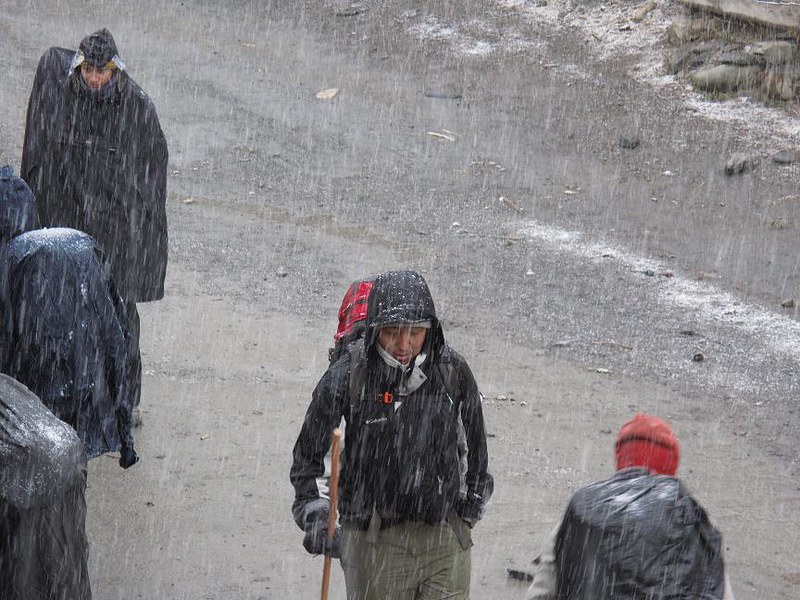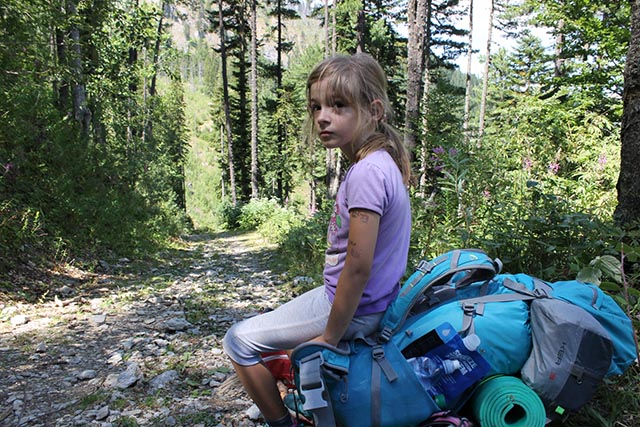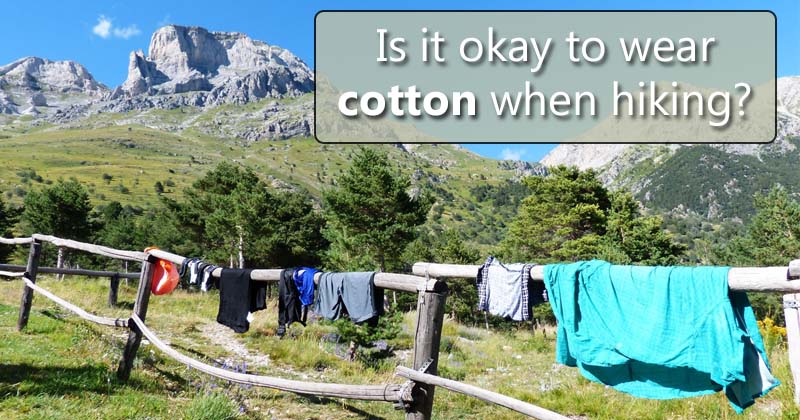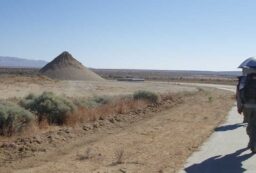Don’t want to shell out $50 for a Merino wool shirt and another $100 for special hiking pants? Before you decide to wear your everyday clothes hiking, here is what you need to know about why “cotton kills” and when it is actually okay to wear cotton hiking.
Why Hikers Say “Cotton Kills”
There are two scientific reasons behind the warning that “cotton kills” outdoors. The first is that cotton has a capillary action, meaning that water goes into the middle of the fibers like a straw. Normally, our clothes keep us warm because they create pockets of air that serve as insulation. Wet cotton doesn’t have these air gaps so won’t keep you warm. By contrast, wool still maintains its insulating properties even when wet.
Cotton is also hydrophilic (water-loving). It can absorb up to 27 times its weight in liquid water, meaning it quickly gets drenched from sweat on hikes. Once wet, cotton dries very slowly. As it dries, your body loses heat through evaporation. You also lose heat conduction: your body heat moves outwards towards the wet clothes. By contrast, quick-dry materials barely hold any water, so won’t cause nearly as much body heat loss.
It might not seem dangerous to wear cotton clothing on a mild-weather hike. However, it’s easy to underestimate how dangerous wet cotton clothing can be. Generally, the body only loses about 2% of its body heat to conduction but, when in contact with wet cotton clothing, it loses 10% to 15% of its heat. Calculate in heat loss from evaporation and you see why hypothermia can occur even at temperatures of 60F.
Hypothermia is the leading cause of death among outdoor recreationists. So, while cotton clothing itself does not kill, it can easily lead to hypothermia — hence why the phrase “cotton kills” is correct. (Sources:1, 2, 3, 4, 5, 6, 7, 8)

In these conditions, wearing cotton clothes could really kill!
Is It Okay to Wear Cotton When Hiking?
While it’s not the ideal material, it is perfectly fine to wear cotton on short hikes in warm weather. A lot of beginner hikers just wear their everyday cotton clothes hiking and have no issues at all. Even if your clothes do end up wet, it isn’t likely to cause dangerous heat loss.
Where cotton starts to be problematic is on longer hikes in extreme climates, such as multi-day backpacking trips in the mountains. Your clothes are almost guaranteed to get wet from sweat. The weather in the mountains can also rapidly change without warning, so you could end up drenched from a rainstorm too. Good rain gear will keep you dry but, because rain jackets aren’t very breathable, you end up sweating more and get wet from the inside out.
Hiking in cotton clothes in winter is definitely not recommended. It defeats the point of having a good winter jacket if you are just going to wear cotton base layers, which will end up wet against your skin.

People have been hiking in cotton for decades. Even park ranger uniforms are still part cotton!
When It Is Okay to Wear Cotton Hiking
While it may not be comfortable, it is perfectly safe to wear cotton hiking at temperatures of 70F and above. In hot and dry climates like the desert, you might even prefer to hike in cotton clothes: they dry so quickly the evaporation helps keep you cool. It’s also okay to wear cotton in cooler weather or longer hikes. Remember, cotton was the go-to material for hikers before all of these high-tech fabrics were invented.
However, if you are going to do a serious hike in cotton, make sure you always have dry clothes to change into.
Bringing enough spare clothes isn’t too problematic in summer. Rain showers usually don’t last very long so, even if you end up drenched from rain, your cotton clothes will still dry fairly quickly when hung out (though not nearly as quickly as “quick dry” materials).
Ensuring you have dry spare clothes is trickier in spring and fall though. It can drizzle for days without end, meaning your cotton clothes have no chance of drying out. You’ll basically need at least once change of clothes for each day. That means bringing LOTS more stuff in your pack. Because wet cotton is heavy, lugging around your wet clothes also weighs down your pack. On a multi-day hike, your clothes might even be moldy by the time you return.
For these reasons, I’d only wear cotton when hiking in summer. You can get away with wearing cotton in spring or fall, but it can really ruin your trip. In winter, the conditions are too extreme to risk wearing cotton at all.

My kid wearing cotton clothes on a two-week hike. Luckily her clothes are tiny so it doesn’t take up much space to pack extras in case they get wet.
Note: Bad things can happen when hiking!
Your cotton clothes might be okay when hiking on a hot day. But what would happen if you had to spend an unplanned night outdoors due to an injury or getting lost? Your cotton clothes could literally be the death of you.
Hope for the best but plan for the worst. And make sure you always have these crucial safety items with you when hiking.
Cotton Hiking Clothes Are Also Bad for Your Skin
Even in weather conditions where it is safe to wear cotton hiking, it still isn’t a good choice. The moisture from wet cotton clothing will cause your skin to soften, making it more sensitive and susceptible to damage. This is why wearing cotton socks can result in blisters. A lot of hikers who wear cotton underwear and bras get skin chaffing.
If you can afford it or are serious about hiking, do yourself a favor and get quick-dry hiking clothes. They are much more comfortable.
Which Fabrics Should You Wear Hiking?
Wool is generally considered the best material for hiking because it is breathable, so prevents sweating. It won’t absorb nearly as much water as cotton: only 30% of its weight vs. 2700% with cotton. Wool also doesn’t have the capillary action like cotton: it will still have air gaps in its fibers when wet, which is why hikers say that wool insulates even when wet.
Nylon and polyester are also good materials for hiking. They don’t absorb water well and have a “wicking” action, which means they move moisture outwards. Because the moisture isn’t against your skin, your body doesn’t lose as much heat from conduction. (9) It’s worth noting though that not all synthetics are created equally. For example, honeycomb polyester (waffle fabric) does a much better job of wicking than normal polyester fibers. (10)
Where to Find Cheap Non-Cotton Hiking Clothes
It’s actually pretty easy to find cheap hiking clothes if you know where to look. All my hiking shirts, for example, cost about $3 each or less. Here are some places to look.
- Secondhand stores: This is where most of my hiking clothes came from.
- REI Outlet: You can sometimes find really good deals on last season’s clothing.
- Exercise clothes: Clothes marketed for “exercise” is usually a lot cheaper than clothes for “hiking,” and works just as well most of the time.
- GearTrade Reddit: This subreddit has lots of listings for outdoor gear.
Do you wear cotton when hiking? Let us know in the comments section below.
Image credit:”miserable hikers” (CC BY-NC 2.0) by Catie & Linds













Post your comments